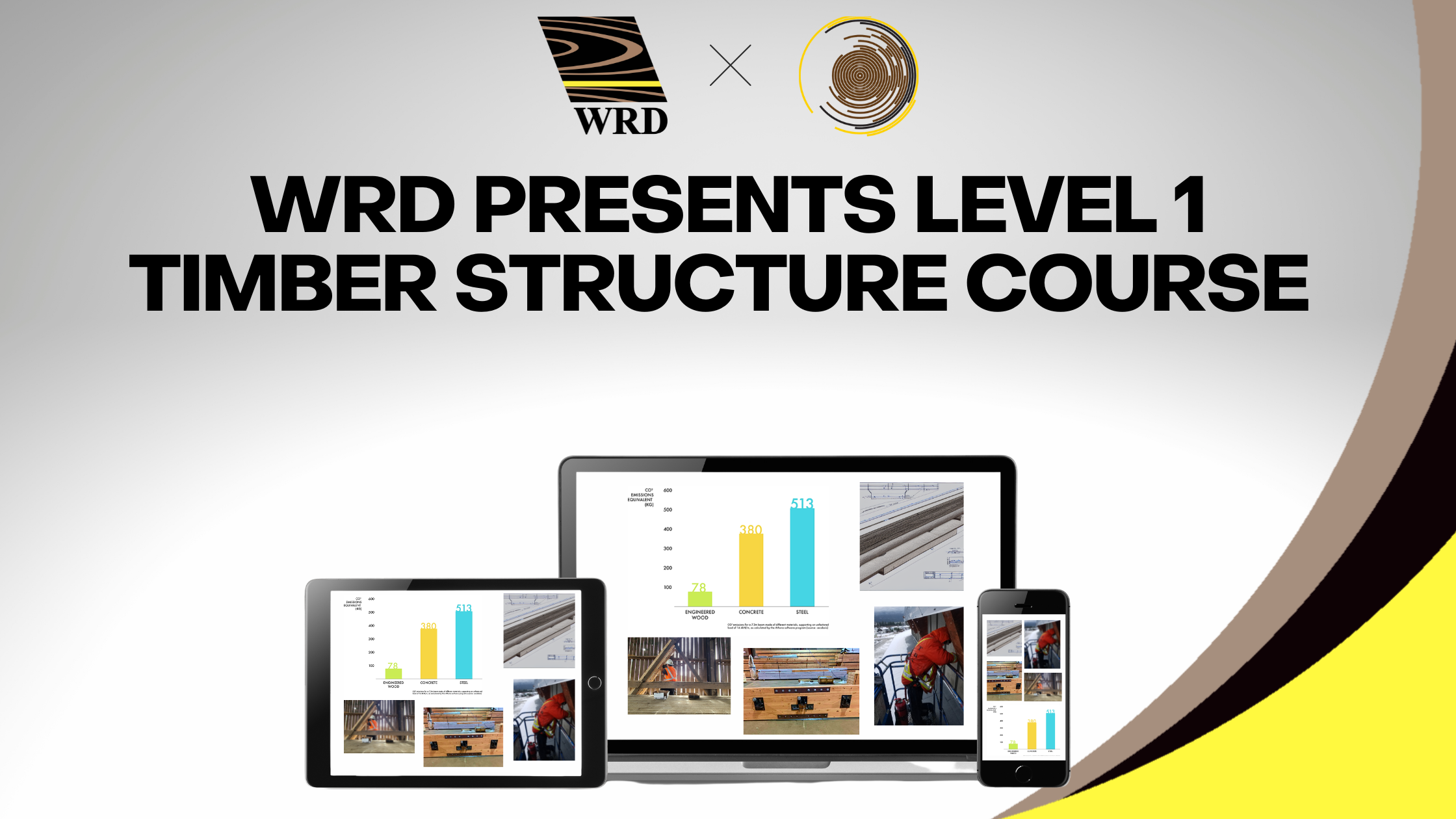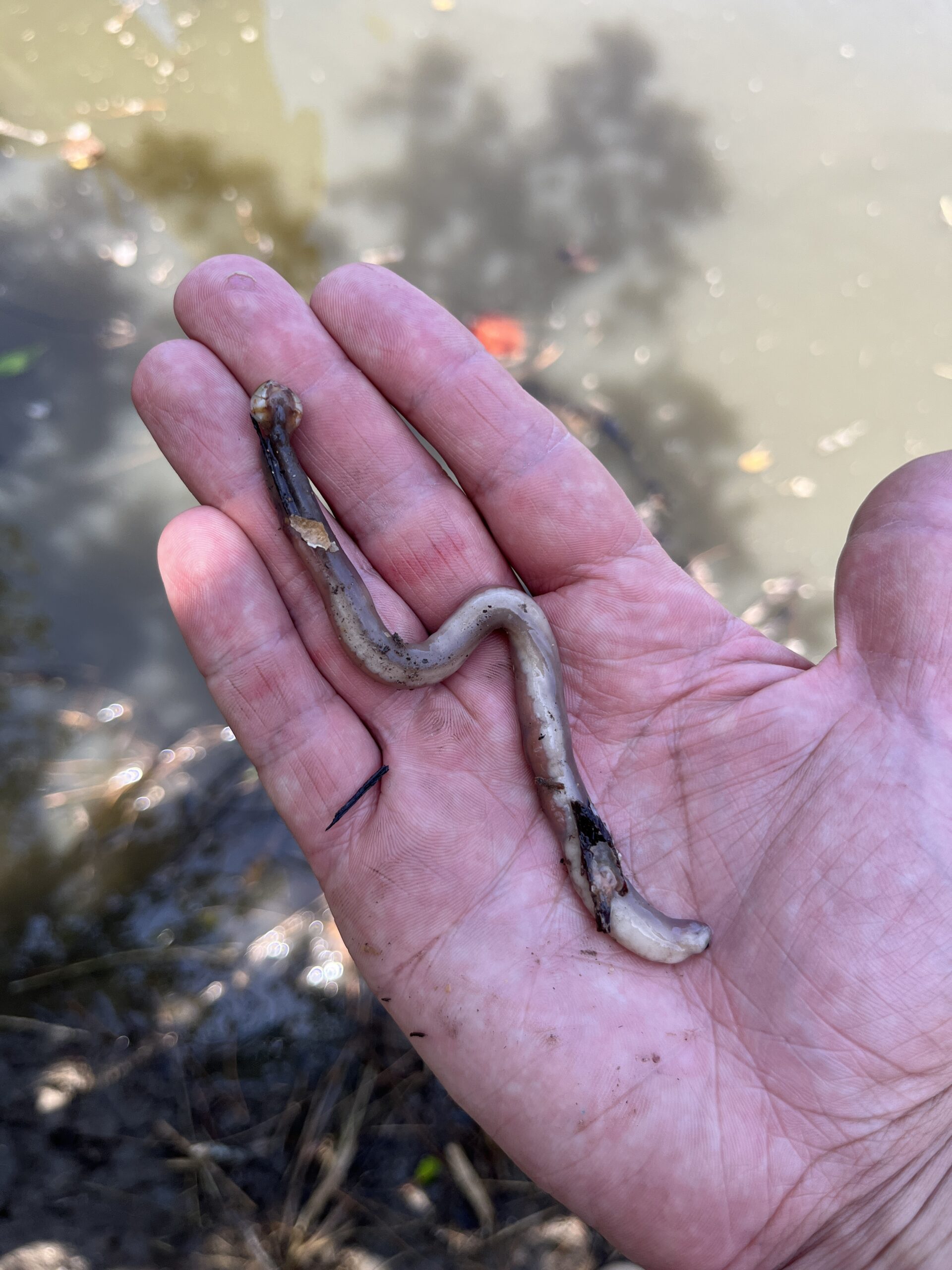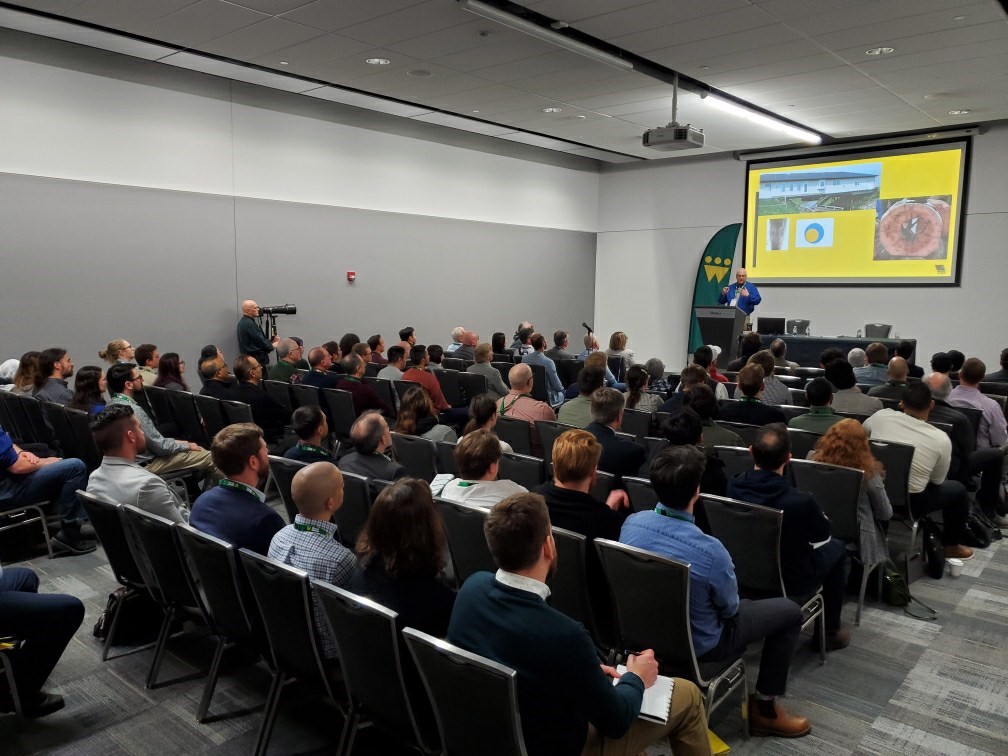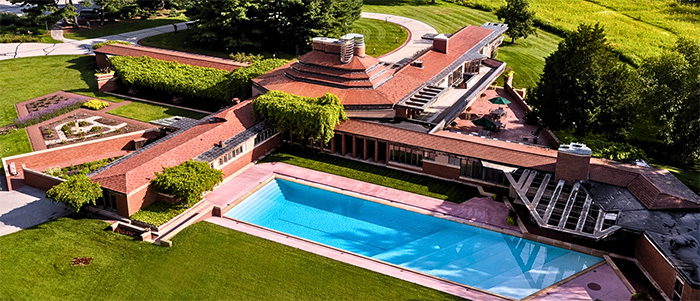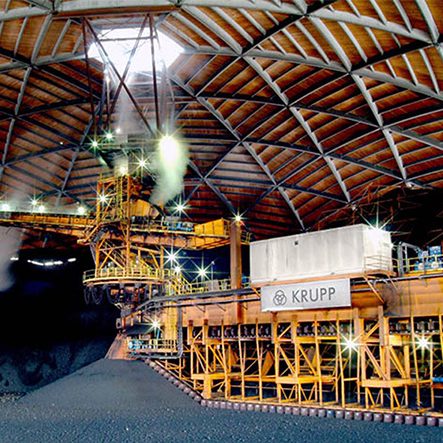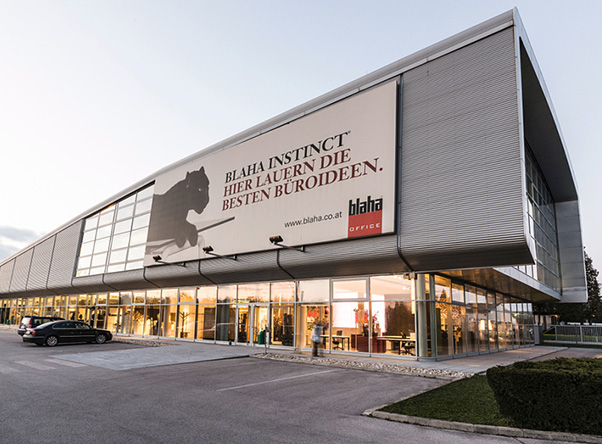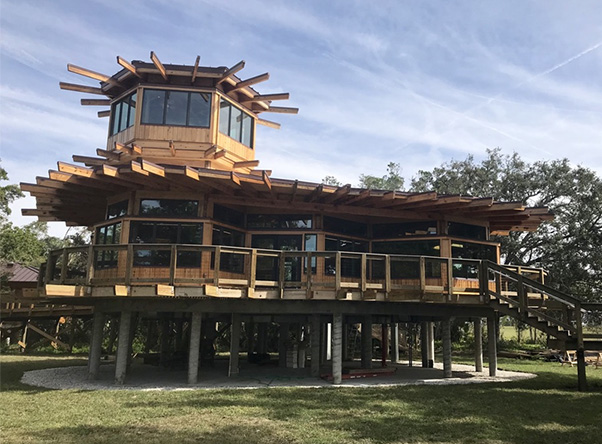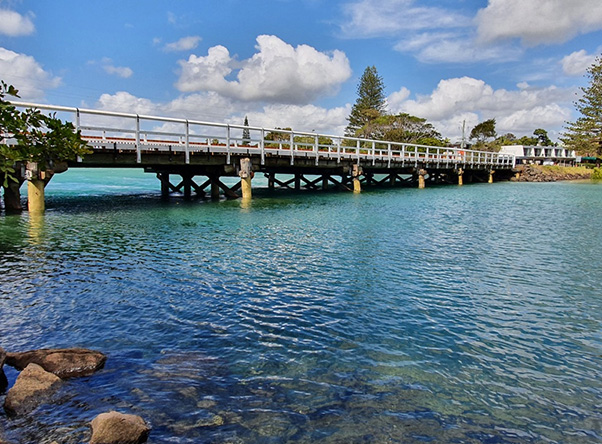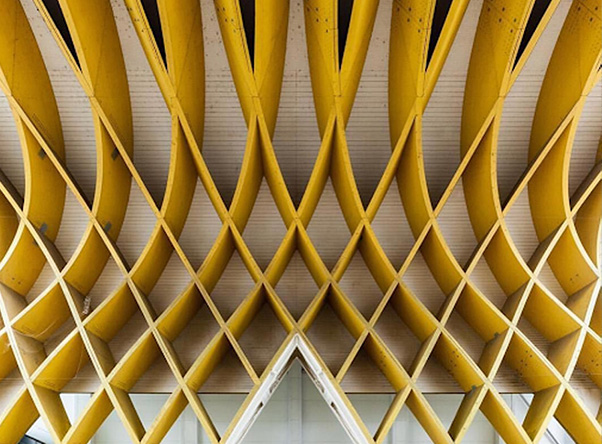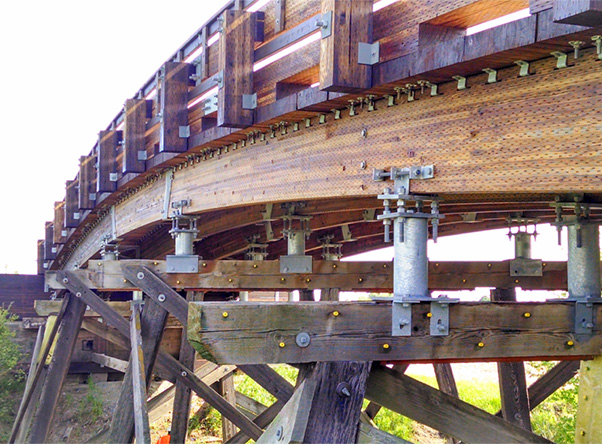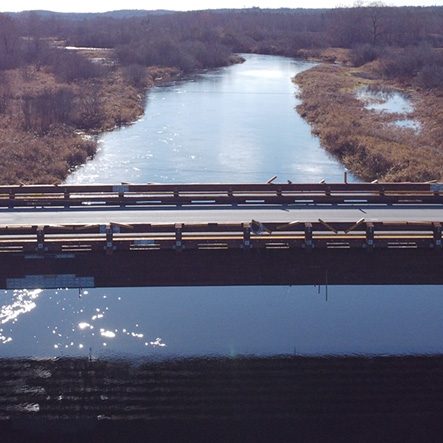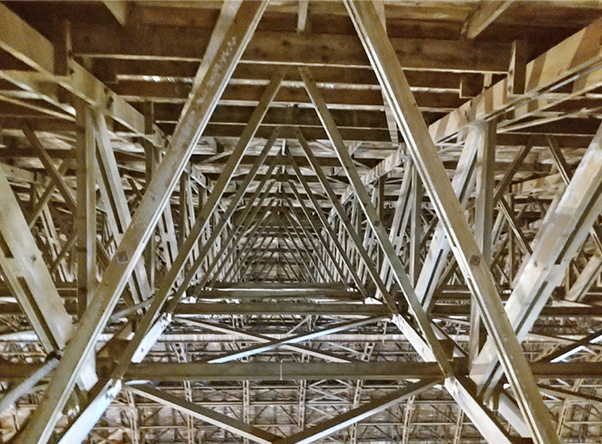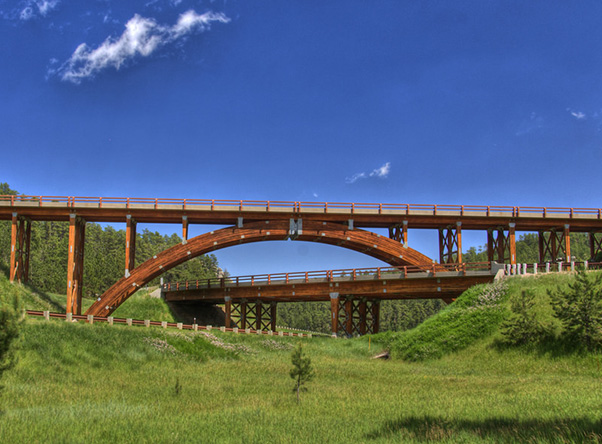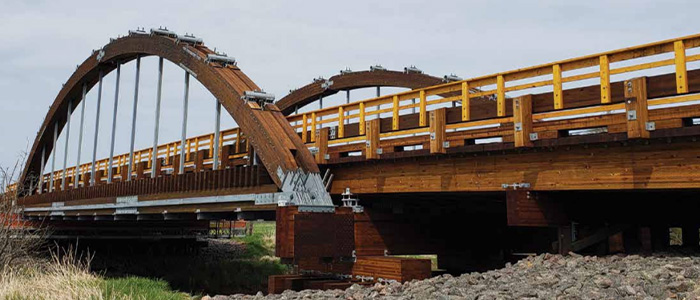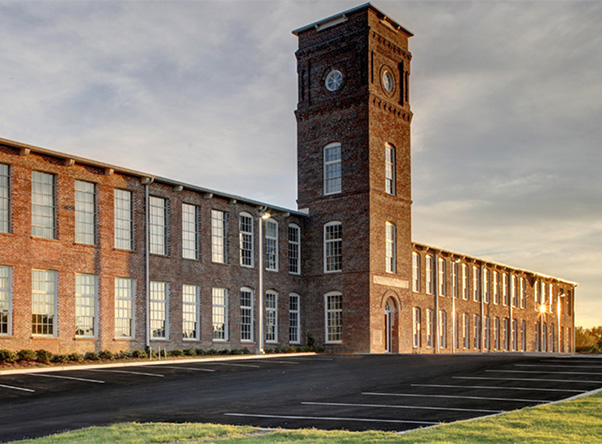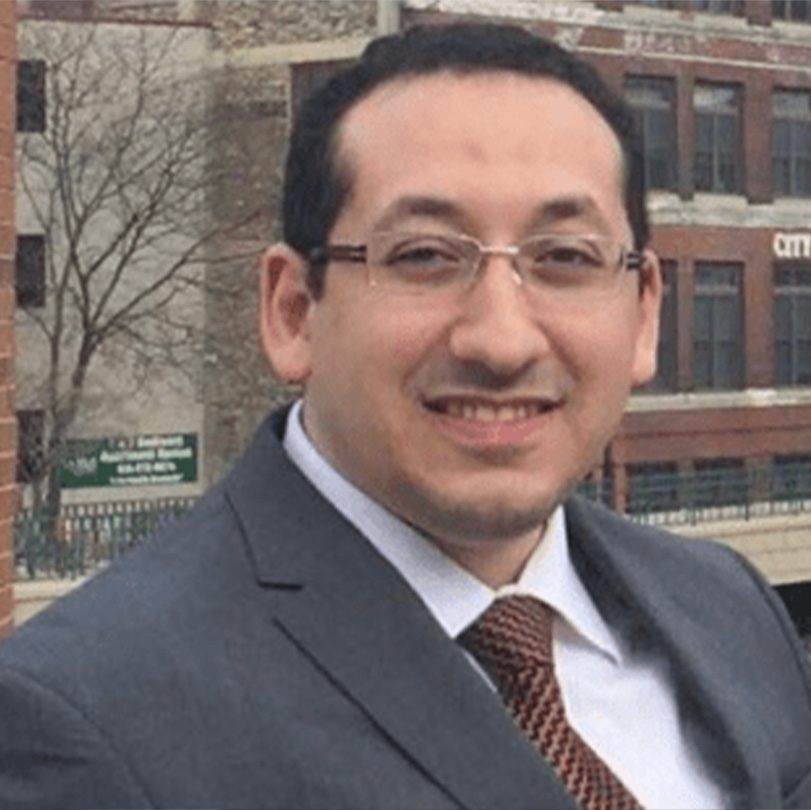Wood Research and Development (WRD) is happy to announce that it has partnered with Timber Restoration Services (TRS) to present a virtual Timber Structure course. The companies have decided to collaborate on this course, to assist TRS to help further employee expertise and assist industry professionals with continuing education learning opportunities. The course is a Level 1 course in the WRD catalog of courses, but covers Advanced topics pertaining to Timber Bridge and Timber structure Maintenance! We are excited to be partnering with TRS to bring this informative and engaging course to you.
Course Overview
This 16-hour training (4-course blocks 4 hours long each) will provide participants with an in-depth look at timber bridge maintenance techniques and advanced building restoration processes. Participants will learn about different timber types such as round log stringers and glulam beam cross heads that can be used for construction purposes. The course will be conducted through Zoom and span over 4 days from February 7-10, 2023. They will also explore how treatments and wood species/manufacturing methods affect maintenance procedures, alongside connector types and connection methods.
Additionally, the course will cover advanced preservation methods such as horizontal versus vertical through bolting, high-strength tension reinforcement fibers, shear panels, and diffusers. Participants will also learn about advanced non-destructive testing equipment used in the field during timber bridge and timber structure inspections Along with learning about testing methods they will gain insights and knowledge on fungal deterioration, decay, rot, and how to detect internal and external rot along with moisture levels in timber.
Course Outcomes and Benefits
Students who successfully complete the course will receive a certification allowing them to complete level 1 timber bridge and timber building inspections along with retrofitting and preservation of timber structures. Attendees will also earn a certificate awarding them 16 professional continuing education hours for all those in a field that requires.
Testimonials
We would like to thank our past participants for their enthusiastic experience with the course thus far:
“Before attending this course, I had received bad news on our timber bridges. Every inspection gave more problems than solutions, suggesting that on most bridges further inspections and major works were required, or, that they were beyond repair and should be replaced. This was coupled with, timber costs increasing rapidly and the costs of the conventional replacement being unaffordable to the community. Attending this course has opened my eyes to many of the reasons for the short life span of our timber bridge components, provided an understanding of what is required to extend their lives, and given hope for the restoration of timber bridges that had already been written off.”
– DAVID GOODMAN – MANAGER CIVIL WORKS
“During this course, I learned about common defects and wood deterioration mechanisms, good and bad maintenance practices, and non-destructive testing and strengthening methods. I particularly enjoyed the hands-on part of the training where we used all the testing equipment in the field during the bridge inspection. The training was well organized and Dr.Tingley was very knowledgeable and happy to answer all questions we had. The course was a great opportunity for meeting other professionals and networking. I would recommend it to anyone who works with timber bridges.”
-YVONNE ULAS – STRUCTURE ASSESSMENT ENGINEER
Course Breakdown
BLOCK 1 (4 HOURS) 10-MINUTE BREAK EVERY 50 MINUTES
Overview of Inspection Techniques and Maintenance Methods:
During this block, students will cover the following topics and more.
- Wood deterioration
- Detecting deterioration
- Effects of fungal decay on the properties of wood
- Preventing decay
- Interior and Exterior decay detection
- Moisture content in timber structures
- Core sample analysis versus sounding borers
- Refurbishment of existing wood structures utilizing high-strength fibers and polymers.
BLOCK 2 (4 HOURS) 10-MINUTE BREAK EVERY 50 MINUTES
Advanced Bridge/Building Maintenance Techniques Part A
This core competency is complex so it has been broken up into two parts which are covered in blocks 2 and 3. During Part A students will learn about the following.
- Connectors
- Treatments of timber for both end treatments and void treatments
- Water migration
- Wood expansion due to moisture content change
- Decay prevention methods such as fumigation and other procedures for proper timber bridge maintenance.
- Questions and Answers.
Test on Block 1 and 2 content
BLOCK 3 (4 HOURS) 10- MINUTE BREAK EVERY 50 MINUTES
Advanced Bridge/Build Maintenance Techniques Part B
This is a continuation of the competency from Block 2 and is a continuation and expansion of those topics. In this block, students will immerse themselves in learning about the following.
- Timber types such as round log stringers and glulam beam cross heads.
- How treatment and wood species/manufacturing methods affect maintenance procedures.
- How connector types and connection methods affect maintenance procedures.
- Refurbishment methods of old timber bridge connector systems.
BLOCK 4 (4 HOURS) 10-MINUTE BREAK EVERY 50 MINUTES
Advanced Bridge/Building Restoration Techniques
- Utilizing advanced non-destructive testing techniques coupled with advanced materials such as shear panels and high-strength tension reinforcement fibers.
- Discussion about advanced preservation methods such as horizontal versus vertical through bolting and advanced materials such as high-strength fiber and diffusers.
- Closing Remarks
- Questions and Answers
Test on Block 3 and 4 content
Registration
We look forward to hosting you all on February 7-10, 2023! If you are interested in attending this course and learning more about advanced timber bridge maintenance and building restoration processes, click here to register! Registration is open now, so don’t miss out on this enlightening event. We look forward to seeing you there!
Wood Research and Development
For more information on Engineering, Structural Engineering, Timber Repair, restoration, inspection, testing, or wood technology topics please subscribe to our blog below. Also, to find out more information on Wood Research and Development (WRD) and the services we offer, and how we can help you with your next project please visit us here
Understanding Durability & Strength of Timber
Durability encapsulates more than just the material’s lifespan. It’s about maintaining structural integrity over time against a suite of challenges. Existing heavy dimensional timber structures are different than modern Mass timber products, such as cross-laminated timber (CLT), glued-laminated timber (glulam), and dowel-laminated timber, are renowned for their exceptional strength and stability. Engineered with precision, they offer performance that surpasses that of raw materials. Pound-for-pound timber is the strongest building material available on the market. But existing heavy dimensional, and timber structures still offer extremely reliable and strong options for structures and can still provide great service to communities around the globe.
Lifespan of Timber
Timber structures can have a lifespan equivalent to or greater than concrete and steel when properly cared for. Understanding the threats to this lifespan is the first step in protecting it. Like with all building materials certain aspects can heavily influence a material’s behavior and lifespan.
Effects of Moisture and Rot
As with any wood product, prolonged exposure to moisture can lead to decay and rot. This is mostly concerned with Wood exposed to open air with a moisture content level of greater than 24%. Timber and wood submerged in water doesn’t apply to this because the main component of the decay process is excessive moisture in combination with oxygen, which due to the lack of oxygen the integrity of the timber member underwater isn’t affected.
Properly designed and constructed timber structures can mitigate the effects of moisture by utilizing vapor barriers, drainage systems, and ventilated cavities. Regular inspections and maintenance can also prevent moisture buildup and catch any potential issues early on, through the use of diffusers and other methods.
Insect Infestation
The best defense against insect infestation is a proactive approach that includes regular inspections, treatment options, and sealants that can deter insects from entering the wood. Additionally, using pressure-treated wood for any areas that may come into contact with the ground can also prevent insect damage.
While termites are a well-known threat to wood structures, other types of pests can also cause damage. Marine borers, for example, are small molluscan EG. shipworms or crustaceans like limnoriids that feed on wood and can be found in marine environments such as docks and piers. They can weaken the structural integrity of timber, making it susceptible to failure over time.
Another type of pest that affects timber is carpenter ants, which can tunnel through wood and weaken its structure. Lastly, wood-boring beetles are also a common pest for timber structures, as their larvae feed on the inner layers of wood and can cause significant damage if left unchecked.
By understanding these pests and implementing preventative measures, such as regular inspections and treatments, you can protect your timber structure from potential infestations and ensure its durability for years to come. Overall, it’s important to actively monitor and address any pest threats to maintain the strength and longevity of your timber investment.
Proactive Protection Strategies
Now that we understand the potential threats to timber durability, let’s explore proactive strategies to protect your wood structure and extend its lifespan.
Design Considerations
The first line of defense against durability issues begins with proper design considerations. This includes incorporating moisture management systems, using fire-resistant materials, and considering climate-specific conditions when choosing materials and coatings. The most critical and overlooked aspect are design details for a structure. This factor alone can cut the lifespan of structure by decades.
Regular Inspections and Maintenance
Regular inspections and maintenance are critical to identifying potential issues before they become major problems. It’s essential to establish a schedule for inspections, repairs, and maintenance tasks such as sealant applications or replacing damaged panels.
Coatings and Sealants
Coatings and sealants not only protect against moisture but also provide an extra layer of defense against insects and fire. Be sure to use coatings and sealants specifically designed for timber, as they differ from those used on traditional wood products.
Education and Training
Finally, education and training are crucial for ensuring the proper care and maintenance of a timber structure. This includes educating construction workers on best practices during assembly and offering training programs for building owners on how to maintain their investment properly.
Future Research and Innovation
The path to improving heavy dimension timber and mass timber durability is an ongoing one. We must continue to push boundaries through research and innovation.
The Quest for Sustainability
Innovation must be coupled with sustainability. Research into eco-friendly treatments and coatings is essential for long-term support of heavy timber and mass timber’s ecological promise.
Advanced Monitoring Technologies
Emerging technologies offer non-invasive ways to monitor the health of your timber. Integrated monitoring systems can provide real-time data, alerting you to potential problems before they manifest.
Working Together for Longevity
By taking proactive steps and working together, we can ensure the long-term durability of heavy timber and mass timber structures. This not only protects our investments but also promotes sustainability and a more environmentally friendly urban landscape for generations to come. By understanding the potential risks and implementing proactive strategies, we can safeguard these exceptional structures for generations to come.
Together, we can build and protect a brighter future with timber. So let’s continue to use this remarkable material responsibly, investing in its maintenance and durability for the sake of our environment and communities. Thank you for joining us on this journey towards a more sustainable and resilient built environment. Keep advocating for timber
Conclusion
Prioritizing the protection and maintenance of timber is crucial, not only for the longevity of individual structures but also for upholding the reputation and potential of timber construction as a whole. In the evolving realms of engineering and urban planning, timber stands steadfast and reliable. It is our collective duty to nurture these structures to serve as symbols of innovation and sustainability.
From the foundation to the rooftops, the durability of timber structures hinges on a commitment to proactive measures. Whether you are a builder reinforcing new constructions or an owner safeguarding existing edifices, your role is pivotal in ensuring the sustainability and safety of our built environment. Embrace these principles earnestly, engage with the expert community, and forge a future where the elegance and sturdiness of timber can inspire future generations. Let’s construct not just buildings but enduring legacies.

